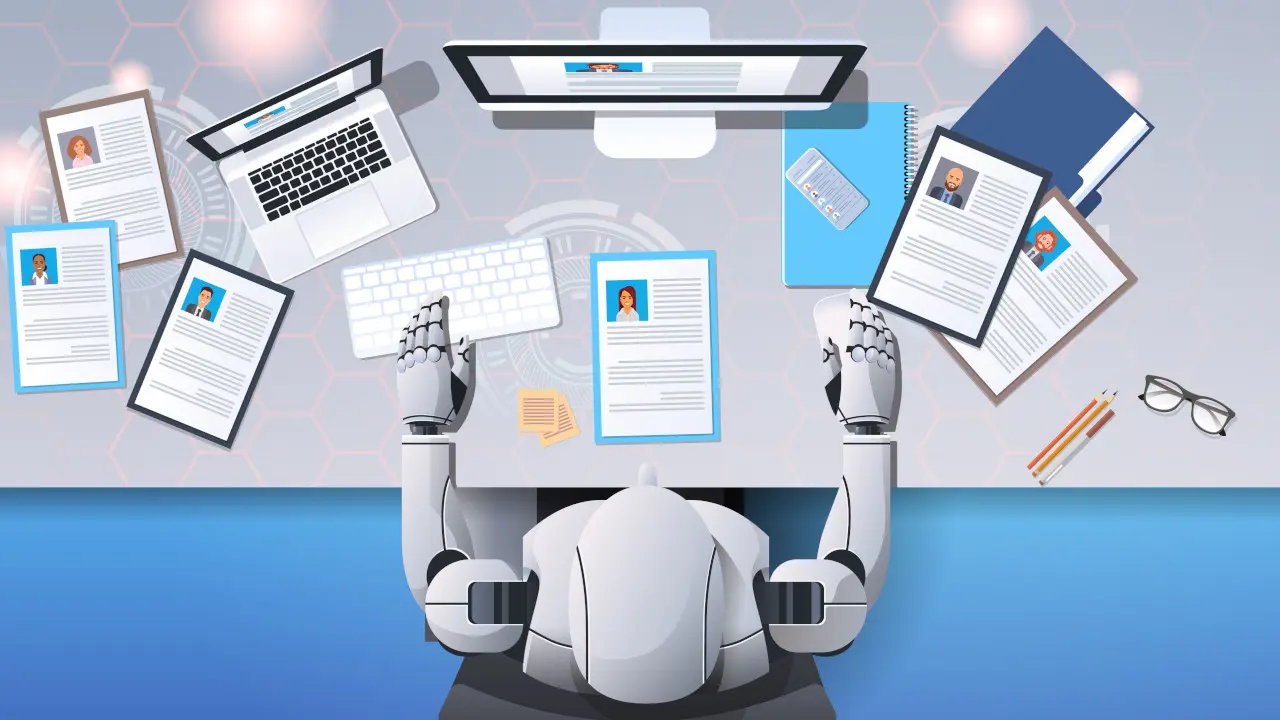AI-based technologies are gaining popularity in almost every industry right now, which means it’s the perfect time to discuss their possible applications and value by introducing it into your recruitment process. Artificial intelligence has already proven to be a valuable tool and asset in many situations, but the technology has plenty of limitations and potential pitfalls too.
The best way to implement these developments in your hiring process is to adopt a balanced approach based on careful research, experimentation and adaptation. These are the fundamental steps for any kind of process improvement and they can serve business leaders well as they seek to integrate AI into their virtual interviewing, sales recruiting and executive search processes.
Interview Yourself First
Before you consider how to leverage new technology in your hiring process, you need to ask yourself a few basic questions. Finding answers to these questions may be an exercise in self-reflection, the result of a team collaboration or even a product of outside observation and consultation.
In any case case, you need to find answers to questions that reveal all of the core components of your hiring process, including:
-
“How do I identify potential recruitment targets in the industry?”
-
“How do I connect with target candidates and maintain engagement afterwards?”
-
“What key traits do people need to succeed in my organization?”
-
“What reasons are there to motivate top talent to apply to my organization?”
Knowing the answer to key questions like these is the essential foundation for establishing an effective hiring process that can be measured, improved and leveraged to fuel real growth. Understanding these issues and factors also prepares you to face some of the tougher questions that will arise when considering the potential benefits and drawbacks of integrating AI solutions.
Opportunities of AI Technology
There are tons of possible applications for AI-assisted tools, but only some of them are actually worth embracing in any given scenario. You should also remember that the real value behind automation is in the time and resources it frees up for the essential tasks and decisions.
Automate Repetitive Tasks
Artificial intelligence and related developments in machine learning have amazing potential for conducting complex, multifaceted and bulk computational work. It can handle vast amounts of data across many different variables, so it’s well-suited for tasks like sorting candidates based on Boolean information very quickly. Developing fine-tuned systems that can perform tasks effectively allows team members to focus on actually engaging target candidates vs inbound applicants.
The key thing to remember is that the AI is only as good as the data and parameters you give it. This process should be fluid and adaptable, with quality control (aka human effort) built in to check and safeguard your process.
Improve Search Quality
These tools are also very useful for searching through online applications, through virtual databases like LinkedIn, Indeed, CareerBuilder and most importantly your own database or ATS system to collect information. Smart search technology can expand the scope of searches while giving better quality and more relevant results when many different criteria are involved.
Considerations to Care About
Automation can be an amazing thing for productivity, but it’s not the right fit for every process. You should always think about what will be lost and compare it to the gains of making the change. You need to know if the cost savings or improvement in results is worth the potential blind spots or difficulties the solution might create.
Minimizing Experience
Implementing AI on the front line of the hiring process is a move you should take a moment to pause and consider before implementing. If the initial interview is more than a formality or a quick run-down, then it’s the place where your hiring professionals can leverage their hard-earned experience and personal intuition to size up candidates. It’s an irreplaceable opportunity to gather a first impression about the confidence, character and attitude of the person. By replacing this step with an automated interview bot, recorded interview or similar one-sided interview, you’re sidelining your team and the real experience they bring to the table to weed through culture and the small subtleties that work within your organization.
Faceless First Contact
The initial interview is when prospective talent sizes up the employer. At Treeline, we always remind our candidates that you are interviewing the company just as much as they are interviewing you. A bad or unsatisfying initial encounter with an AI interview tool could be a deterrent or discouragement that doesn’t really reflect your company. It can also send the wrong message about the company’s attitude towards their employees, especially for motivated candidates who are serious about career development. Think about it this way – would you want to spend 30 minutes with a hiring manager or an AI interview bot?
As a hiring manager, are you confident that an AI Interview Bot can articulate the value and personal reasons a candidate should join your organization? An AI bot can fact check and grab information from across the web in regards to your company, but what safeguards are in place to make sure your AI bot is sharing information you’d use to get a candidate excited in an interview vs. potentially leveraging information from a poor glassdoor review? Understanding these areas are of the utmost importance before implementing an AI solution.
Use AI to Inform Decisions, Not Make Them
Connecting, engaging and recruiting are three distinct stages of a single core process. There is more than enough room in and between these stages for AI-assistance and automation to support your efforts. However, you need to make sure you are using these tools to inform data-driven solutions rather than make the choices for you.
The human connection is important throughout the entire recruitment process and onboarding experience, especially for growing companies seeking top-notch people for key positions. Conversation is the key to engagement, which is the first real step towards a working relationship that benefits both parties.
You should at least put yourself in the shoes of a prospective hire going through the process you are designing. Setting up focus groups and test candidates to give feedback on how the process might impact the way people think or feel towards the company.
Hold to the Human Element
Hiring and other HR activities are all about humans, so it only makes sense that human intuition and decision should remain at the core of all key processes. Even though the team at Treeline, Inc. is excited about the potential applications of AI in our industry, we know that it’s no substitute for the key skills and abilities that make recruiting success happen.
Human engagement and conversation is how you identify critical considerations for candidates like their “push and pulls” and “pain points.” It’s also how you create opportunities to explore negotiation and compromise that could have great benefits for everyone. Moving towards full virtual interviewing and recruitment inevitably means sacrificing some of the intricacies and interactions that allow professionals to leverage valuable skills.
Share This Story, Choose Your Platform!
What our happy clients are saying
Let Us Help You Source the Sales Talent You Need
Whether you’re building a team or replacing a key role, our Candidate Sourcing Platform provides a fast, flexible, and employer-focused solution.
Tell us more about your business and how we can help.
Treeline Inc.
Your Award-Winning Sales Recruitment Partner
15 Lincoln Street, Suite 314, Wakefield, MA 01880












